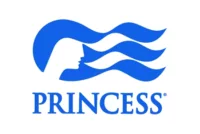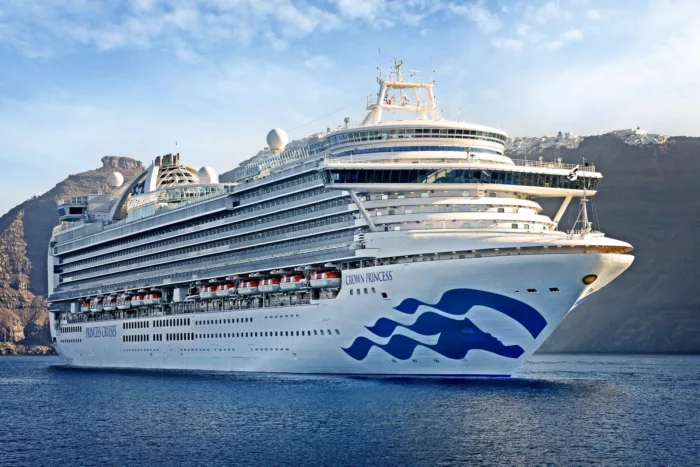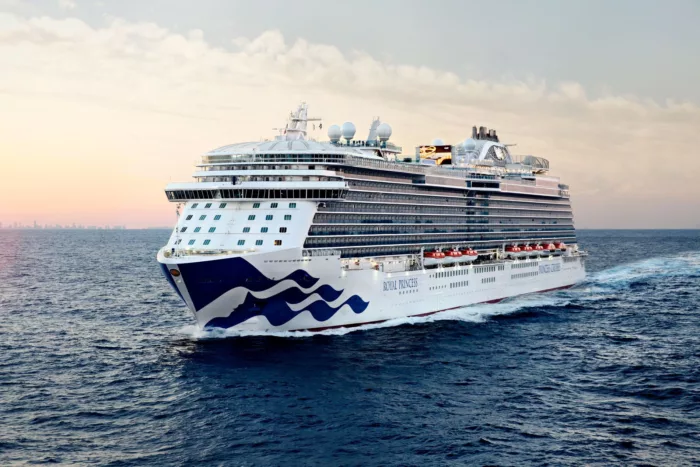
Princess Cruises
Credited with introducing millions of Americans to the concept of a modern cruise holiday, Princess Cruises is still innovating to this day.
Sporting a fleet of 17 ships with capacities ranging from 2,000 to 4,300 passengers, the line is best known for its Alaskan cruises, but travels to destinations the world over.
With an emphasis on destination leadership and local expertise, Princess is an excellent choice for the discerning traveller seeking to sail in comfort.
3080
Passengers
1200
Crew
2006
Launched
2018
Last refit
113561t
Tonnage
290m
Length
49m
Width
22kts
Speed
15
Decks
USD
Currency
Cruise Itinerary
Day 1
Brisbane, Queensland, Australia
Days 2 - 7
At Sea
Relax and make the most of the myriad of facilities available on board the ship, from fantastic entertainment to delicious and diverse dining options.
Day 8
Benoa, Bali, Indonesia
Wheelchair Access Limited
Days 9 - 10
At Sea
Relax and make the most of the myriad of facilities available on board the ship, from fantastic entertainment to delicious and diverse dining options.
Day 11
Singapore, Singapore
Days 12 - 15
At Sea
Relax and make the most of the myriad of facilities available on board the ship, from fantastic entertainment to delicious and diverse dining options.
Day 16
Colombo, Sri Lanka
Days 17 - 23
At Sea
Relax and make the most of the myriad of facilities available on board the ship, from fantastic entertainment to delicious and diverse dining options.
Day 24
'Aqaba, Jordan
Days 25 - 26
,
Day 27
Alexandria, Egypt
Day 28
At Sea
Relax and make the most of the myriad of facilities available on board the ship, from fantastic entertainment to delicious and diverse dining options.
Day 29
Pátmos, Greece
Wheelchair Access Limited
Day 30
Kusadasi, Turkey
Day 31
Athens, Greece
Day 32
At Sea
Relax and make the most of the myriad of facilities available on board the ship, from fantastic entertainment to delicious and diverse dining options.
Day 33
Valletta, Malta
Day 34
Palermo, Italy
Day 35
At Sea
Relax and make the most of the myriad of facilities available on board the ship, from fantastic entertainment to delicious and diverse dining options.
Day 36
Cartagena, Spain
Day 37
At Sea
Relax and make the most of the myriad of facilities available on board the ship, from fantastic entertainment to delicious and diverse dining options.
Day 38
Porto, Portugal
Day 39
At Sea
Relax and make the most of the myriad of facilities available on board the ship, from fantastic entertainment to delicious and diverse dining options.
Day 40
Cobh, Ireland
Day 41
At Sea
Relax and make the most of the myriad of facilities available on board the ship, from fantastic entertainment to delicious and diverse dining options.
Day 42
Zeebrugge, Belgium
Days 43 - 44
At Sea
Relax and make the most of the myriad of facilities available on board the ship, from fantastic entertainment to delicious and diverse dining options.
Day 45
Gdynia, Poland
Day 46
Visby, Sweden
Day 47
Helsinki, Finland
Day 48
Tallinn, Estonia
Day 49
Stockholm, Sweden
Day 50
At Sea
Relax and make the most of the myriad of facilities available on board the ship, from fantastic entertainment to delicious and diverse dining options.
Day 51
Copenhagen, Denmark
Day 52
At Sea
Relax and make the most of the myriad of facilities available on board the ship, from fantastic entertainment to delicious and diverse dining options.
Day 53
IJmuiden, Netherlands
Day 54
Dover, England

Day 1
Brisbane, Queensland, Australia

Days 2 - 7
At Sea

Day 8
Benoa, Bali, Indonesia

Days 9 - 10
At Sea

Day 11
Singapore, Singapore

Days 12 - 15
At Sea

Day 16
Colombo, Sri Lanka

Days 17 - 23
At Sea

Day 24
'Aqaba, Jordan

Days 25 - 26
,

Day 27
Alexandria, Egypt

Day 28
At Sea

Day 29
Pátmos, Greece

Day 30
Kusadasi, Turkey

Day 31
Athens, Greece

Day 32
At Sea

Day 33
Valletta, Malta

Day 34
Palermo, Italy

Day 35
At Sea

Day 36
Cartagena, Spain

Day 37
At Sea

Day 38
Porto, Portugal

Day 39
At Sea

Day 40
Cobh, Ireland

Day 41
At Sea

Day 42
Zeebrugge, Belgium

Days 43 - 44
At Sea

Day 45
Gdynia, Poland

Day 46
Visby, Sweden

Day 47
Helsinki, Finland

Day 48
Tallinn, Estonia

Day 49
Stockholm, Sweden

Day 50
At Sea

Day 51
Copenhagen, Denmark

Day 52
At Sea

Day 53
IJmuiden, Netherlands

Day 54
Dover, England
Ship Details


Princess Cruises
Crown Princess
Your escort to a world of dazzling amenities, sublime dining options and exotic destinations
Enjoy sweeping views of the world while sailing on Crown Princess.
Cabins
All Prices





















